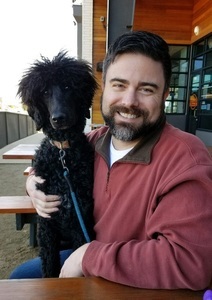14730337
MSK4 - Random Stuff for Final
Description
Quiz by Ben Williams, updated more than 1 year ago
More
Less

|
Created by Ben Williams
about 7 years ago
|
|
Resource summary
Question 1
Question
Myelopathy is any pathological condition of the spinal cord.
Answer
- True
- False
Question 2
Question
Radiculopathy is any pathological condition of the spinal cord.
Answer
- True
- False
Question 3
Question
Myelopathy is any pathology of a spinal nerve root.
Answer
- True
- False
Question 4
Question
Radiculopathy is any pathology of a spinal nerve root.
Answer
- True
- False
Question 5
Question
Radiculopathy causes UMN signs.
Answer
- True
- False
Question 6
Question
Myelopathy causes UMN signs.
Answer
- True
- False
Question 7
Question
Myelopathy causes LMN signs.
Answer
- True
- False
Question 8
Question
Radiculopathy causes LMN signs.
Answer
- True
- False
Question 9
Question
Which of the following are UMN signs?
Answer
-
Motor weakness
-
(+) Babinski
-
spasticity
-
hyper-reflexia
-
clonus
-
fasciculations
-
atrophy
-
hypo-reflexia
Question 10
Question
Which of the following are LMN signs?
Answer
-
Motor weakness
-
(+) Babinski
-
spasticity
-
hyper-reflexia
-
clonus
-
fasciculations
-
atrophy
-
hypo-reflexia
Question 11
Question
If your patient has symptoms along the L5 spinal nerve root, which disc might be herniated?
Answer
-
L3/4
-
L4/5
-
L5/S1
-
L2/3
-
L1/2
Question 12
Question
If your patient has symptoms along the L5 spinal nerve root, lateral foraminal stenosis of which level might be the culprit?
Answer
-
L1/2
-
L2/3
-
L3/4
-
L4/5
-
L5/S1
Question 13
Question
If your patient has symptoms along the C6 spinal nerve root, which disc might be herniated?
Answer
-
C1/2
-
C2/3
-
C3/4
-
C5/6
-
C4/5
-
C6/7
-
C7/8
Question 14
Question
If your patient has symptoms along the C6 spinal nerve root, lateral foraminal stenosis of which level might be the culprit?
Answer
-
C1/2
-
C2/3
-
C3/4
-
C4/5
-
C5/6
-
C6/7
-
C7/8
Question 15
Question
In the cervical spine, disc herniation and lateral forminal stenosis both affect the spinal nerve root named for the lower vertebra.
Answer
- True
- False
Question 16
Question
In the lumbar spine, disc herniation and lateral forminal stenosis both affect the spinal nerve root named for the lower vertebra.
Answer
- True
- False
Question 17
Question
In the lumbar spine, disc herniation affects the spinal nerve root named for the lower vertebra, but lateral foraminal stenosis affects the one above.
Answer
- True
- False
Question 18
Question
In the lumbar spine, disc herniation affects the spinal nerve root named for the upper vertebra, but lateral foraminal stenosis affects the one below.
Answer
- True
- False
Question 19
Question
“[blank_start]Bilateral foraminal stenosis[blank_end] follows dermatomal/myotomal pattern (due to it being nerve root involvement), [blank_start]central canal stenosis[blank_end] does not follow pattern.” - S.Castro
Answer
-
Bilateral Foraminal Stenosis
-
Central Canal Stenosis
-
central canal stenosis
-
bilateral foraminal stenosis
Question 20
Question
Central Canal Stenosis may result from which of the following?
Answer
-
Ligamentum Flavum buckling
-
Posterior Longitudinal Ligament buckling
-
Degenerative or herniated discs
-
Spondylolisthesis
-
Congenitally short/thick pedicles
-
ZGP joint osteophytes
Question 21
Question
Lateral Stenosis may result from which of the following?
Answer
-
Ligamentum Flavum buckling
-
Posterior Longitudinal Ligament buckling
-
Spondylolisthesis
-
Congenitally short/thick pedicles
-
Disc bulging or herniation
-
ZGP joint osteophytes
Question 22
Question
Differential diagnosis for spinal stenosis
Answer
-
Disc herniation
-
Vascular Claudication
-
Primary or secondary tumor
-
Peripheral neuropathy
-
OA of hips or knees
-
Spondylolysis
-
Ligamentous Instability
-
Scoliosis
Question 23
Question
Which of the following would be indicative of a positive test for neurogenic claudication?
Answer
-
Patient demonstrates greater tolerance for walking on treadmill in inclined position.
-
Patient demonstrates greater tolerance for walking on treadmill in flat position.
Question 24
Question
Neurogenic Claudication is defined as Bilateral pain/weakness/paresthesia/cramping in buttocks, thighs, and calves initiated by prolonged standing and walking and relieved by sitting or bending forward.
Answer
- True
- False
Question 25
Question
Neurogenic Claudication is defined as Bilateral pain/weakness/paresthesia/cramping in buttocks, thighs, and calves initiated by prolonged sitting or bending forward and relieved by standing and walking
Answer
- True
- False
Want to create your own Quizzes for free with GoConqr? Learn more.
